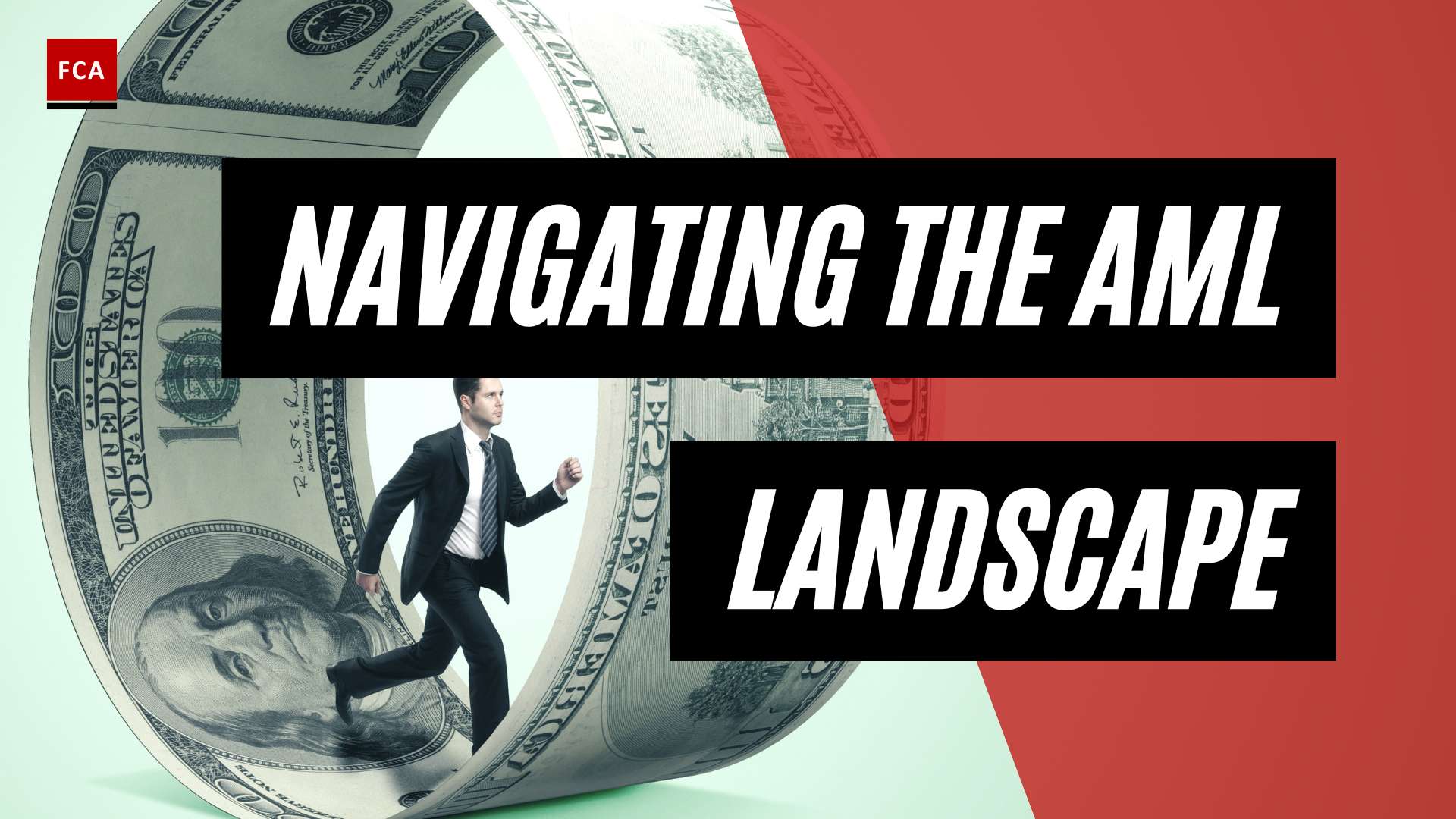Blockchain Technology and AML
Blockchain technology has emerged as a promising solution in the fight against money laundering and has the potential to revolutionize Anti-Money Laundering (AML) processes. By providing a transparent, secure, and decentralized platform for transactions, blockchain technology offers unique advantages in addressing the challenges faced by compliance teams.
Overview of Blockchain Technology
Blockchain technology is a distributed ledger system that enables the secure recording, verification, and tracking of transactions across multiple computers or nodes. Each transaction is grouped into a block, which is then added to a chain of previous blocks, forming an unalterable record of all transactions. This decentralized nature of blockchain ensures that transactions are transparent, traceable, and resistant to tampering.
The key features of blockchain technology that make it attractive for AML include transparency, immutability, and decentralization. The transparency of blockchain allows for real-time monitoring and auditing of transactions, providing increased visibility into financial activities. The immutability of blockchain ensures that once a transaction is recorded, it cannot be altered, providing a reliable and tamper-proof audit trail. The decentralized nature of blockchain eliminates the need for intermediaries, reducing the risk of fraud and manipulation.
Challenges in Anti-Money Laundering (AML)
Traditional AML processes face several challenges that can be overcome with the use of blockchain technology. Legacy AML solutions often rely on outdated systems and manual processes, resulting in inefficiencies and increased costs. These systems struggle to keep up with the speed and volume of digital transactions, making it difficult to detect and prevent money laundering activities.
Another challenge is the limited traceability of funds within existing AML systems, which hinders the ability to track the source of funds and detect suspicious activities (Merkle Science). Moreover, traditional AML solutions often adopt a reactive approach, detecting suspicious activities after they have occurred, rather than preventing them in real-time (Merkle Science).
Blockchain technology addresses these challenges by providing a secure, efficient, and transparent platform for monitoring and detecting suspicious activities. The decentralized and immutable nature of blockchain ensures that transactions are recorded in a tamper-proof manner, enhancing the traceability of funds and facilitating the detection of money laundering activities. By leveraging smart contracts and advanced algorithms, blockchain-based AML systems can enable real-time monitoring and automated alerts for suspicious transactions, allowing for proactive prevention of money laundering activities (Harvard University).
In the next sections, we will explore the benefits of blockchain for AML, AML regulations in the crypto space, implementation of blockchain for AML, challenges of blockchain in AML, international cooperation on AML regulations, AML risks in blockchain, AML compliance in blockchain, and the role of ICAEW Chartered Accountants.
Benefits of Blockchain for AML
Blockchain technology has emerged as a powerful tool in the fight against money laundering, offering numerous benefits to Anti-Money Laundering (AML) efforts. By leveraging the unique features of blockchain, financial institutions can enhance transparency, traceability, efficiency, and cost-effectiveness in their AML processes.
Enhancing Transparency and Traceability
One of the key advantages of blockchain technology for AML is its ability to enhance transparency and traceability in financial transactions. The decentralized and immutable nature of blockchain allows for the creation of secure and transparent networks, facilitating compliance with AML regulations.
By utilizing blockchain, financial institutions can establish a decentralized ledger system that records and verifies transactions in real-time. This enables the secure sharing and tracking of transaction data among authorized parties, making it easier to identify and flag suspicious activities. The immutability of blockchain ensures that transaction records cannot be altered or erased, providing an auditable trail for AML investigations (DevTeam Space).
Improving Efficiency and Cost-effectiveness
Blockchain technology also offers significant improvements in efficiency and cost-effectiveness for AML processes. Traditional AML measures often involve redundant and time-consuming procedures, such as duplicate Know Your Customer (KYC) checks and manual record-keeping. These inefficiencies can be mitigated by leveraging blockchain technology (Harvard University).
With blockchain, financial institutions can streamline their KYC procedures by securely sharing customer information on a distributed ledger. This reduces duplication of efforts and enhances the overall AML compliance process. Additionally, the automated nature of blockchain transactions eliminates the need for intermediaries, reducing processing time and costs associated with traditional financial transactions.
By implementing blockchain technology, financial institutions can better comply with AML regulations while improving operational efficiency and reducing costs. The transparency and traceability provided by blockchain enable more effective monitoring and detection of suspicious activities, ultimately strengthening the overall AML framework.
In the next sections, we will explore the specific AML regulations in the crypto space and discuss the challenges and risks associated with blockchain technology in AML efforts. Stay tuned to learn more about the evolving landscape of AML and the role of blockchain technology in combating money laundering.
AML Regulations in the Crypto Space
As cryptocurrencies and blockchain technology continue to evolve, so do the regulations surrounding Anti-Money Laundering (AML) in the crypto space. Governments and regulatory bodies around the world are taking steps to ensure that AML measures are implemented effectively. In this section, we will explore some of the key AML regulations and guidelines specific to the crypto industry.
FATF Guidelines on Virtual Assets
The Financial Action Task Force (FATF) issued global standards in 2019 that require Virtual Asset Service Providers (VASPs) to be regulated similarly to financial institutions. These standards aim to combat money laundering and terrorism financing through cryptocurrencies. VASPs are now required to comply with AML regulations, including Customer Due Diligence, Know Your Customer (KYC) checks, transaction monitoring, sanctions screening, and more.
KYC Checks for Crypto Operations
Know Your Customer (KYC) checks are mandatory for crypto operations in most jurisdictions. These checks play a crucial role in identifying and verifying clients before permitting transactions. During the client onboarding process, VASPs are required to collect and verify information such as the client’s identity, address, and source of funds. This helps to mitigate the risk of money laundering and other illicit activities in the crypto space (LinkedIn Pulse).
Transaction Monitoring for VASPs
Virtual Asset Service Providers (VASPs) and financial institutions dealing with virtual asset transfers are now required to follow the FATF Travel Rule. This rule entails collecting and sharing personal data of senders and recipients in transactions. The threshold for these virtual asset transfers is typically around $1,000, although countries can establish their own thresholds or forgo them entirely (LinkedIn Pulse). By implementing transaction monitoring systems, VASPs can detect and report suspicious activities, enhancing transparency and regulatory oversight in the crypto industry.
These regulations, along with existing frameworks such as the EU’s Fifth Anti-Money Laundering Directive (5AMLD) and the Financial Crimes Enforcement Network (FinCEN) rule in the U.S., aim to bring Virtual Asset Service Providers (VASPs) into the regulatory framework. The goal is to combat money laundering and terrorism financing through cryptocurrencies and blockchain technology. As part of these regulations, VASPs are required to conduct customer due diligence, monitor transactions, and file Suspicious Activity Reports (SARs) to enhance transparency and regulatory oversight in the crypto industry (Financial Crime Academy).
By implementing these AML regulations in the crypto space, governments and regulatory bodies aim to protect the integrity of the financial system and prevent illicit activities. Compliance with these regulations is crucial for Virtual Asset Service Providers (VASPs) and other entities involved in cryptocurrency transactions. It is important for organizations to stay informed about the evolving AML landscape and ensure that they have robust AML compliance measures in place to mitigate the risks associated with money laundering and other financial crimes.
Implementing Blockchain for AML
To combat the challenges of Anti-Money Laundering (AML) regulations, financial institutions are increasingly turning to blockchain technology for its potential to enhance security, transparency, and efficiency. Implementing blockchain for AML involves leveraging its capabilities in secure and transparent networks, streamlining Know Your Customer (KYC) procedures, and automating compliance processes.
Secure and Transparent Networks
Blockchain technology provides a decentralized and immutable ledger system that can facilitate secure and transparent networks for AML compliance. Financial institutions can leverage blockchain’s decentralized nature to create a network where transaction data is stored across multiple nodes, making it difficult for malicious actors to tamper with the data. This transparency allows for real-time tracking and reporting of financial transactions, making it easier to identify suspicious activities in compliance with AML regulations. By utilizing blockchain, financial institutions can enhance the reliability and integrity of their transaction data.
Streamlining KYC Procedures
One of the key advantages of implementing blockchain for AML is streamlining the KYC procedures. KYC is a crucial step in AML compliance, requiring financial institutions to verify the identities of their customers to prevent money laundering. Blockchain can improve the effectiveness of KYC procedures by enabling secure sharing of customer information among financial institutions. This reduces the duplication of KYC efforts and enhances the overall AML compliance process. By leveraging blockchain, financial institutions can streamline the KYC process, improving efficiency and reducing costs.
Automation of Compliance Processes
Blockchain-based solutions offer the potential to automate compliance processes, revolutionizing the way AML regulations are adhered to. Automation can assist in transaction monitoring, reporting, and record-keeping, reducing the administrative burden on financial institutions and enhancing the accuracy and timeliness of AML compliance activities. By utilizing smart contracts powered by blockchain, financial institutions can automate the execution of compliance rules, ensuring that transactions align with regulatory requirements. This automation not only increases efficiency but also reduces the risk of human error in compliance procedures.
By implementing blockchain for AML, financial institutions can leverage its secure and transparent networks, streamline KYC procedures, and automate compliance processes. However, it’s important to note that challenges such as regulatory concerns, interoperability with existing systems, and industry-wide adoption may arise during the implementation process. Collaborative efforts among regulators, financial institutions, and technology experts are crucial to overcoming these challenges and fully unleashing the potential of blockchain in AML compliance.
For professionals working in compliance, risk management, and anti-money laundering, understanding the benefits and challenges of implementing blockchain for AML is essential to stay ahead in the rapidly evolving digital age. By keeping abreast of emerging trends and technological innovations, such as blockchain, professionals can effectively navigate the complex landscape of AML regulations and contribute to the fight against financial crime.
Challenges of Blockchain in AML
As blockchain technology continues to revolutionize the financial industry, it brings forth a range of challenges in the field of anti-money laundering (AML). The decentralized and transparent nature of blockchain poses unique regulatory concerns, interoperability challenges with existing systems, and the need for industry-wide adoption.
Regulatory Concerns
The decentralized nature of blockchain technology, which eliminates the need for intermediaries and central authorities, presents regulatory challenges for AML efforts. The absence of a centralized institution to monitor transactions makes it difficult to identify and prevent illicit activities effectively. Additionally, the pseudonymous nature of cryptocurrency transactions on the blockchain adds to the complexity of AML compliance, as it can be challenging to trace the identities of individuals involved. Regulators are actively working to enhance AML measures in the blockchain space through the development of regulatory frameworks, guidance, and collaboration with industry participants (Bloomberg Law).
Interoperability with Existing Systems
Integrating blockchain technology into existing AML systems and infrastructure can be challenging. The compatibility and interoperability of blockchain with traditional financial systems, regulations, and reporting mechanisms pose hurdles. Achieving seamless integration requires the development of standardized protocols and interfaces to ensure the smooth flow of information and compliance across different platforms and systems. Collaboration between blockchain developers, financial institutions, and regulatory bodies is crucial to overcome these interoperability challenges.
Industry-wide Adoption
For blockchain to reach its full potential in AML, industry-wide adoption is essential. Encouraging financial institutions, technology providers, and regulators to embrace blockchain-based solutions requires addressing concerns related to scalability, security, and familiarity. Education and awareness programs, along with clear guidelines and regulations, can help promote the adoption of blockchain technology for AML purposes. Collaboration and knowledge-sharing among industry stakeholders are key to driving widespread acceptance and implementation.
Addressing the challenges of blockchain technology in AML is crucial to leverage its potential benefits in combating money laundering and other financial crimes. Regulatory frameworks, technological advancements, and industry collaboration will play a significant role in overcoming these obstacles and establishing effective AML practices in the digital age.
International Cooperation on AML Regulations
The implementation of effective anti-money laundering (AML) regulations in the context of blockchain technology requires international cooperation due to the global nature of this emerging technology. However, achieving consensus on AML regulations can be challenging due to the diversity of national policies, the influence of major virtual asset network creators, and the sovereign power of states.
Diversity of National Policies
One of the primary obstacles to international cooperation on AML regulations is the diversity of national policies. Different countries have varying approaches to AML regulations, making it difficult to create a unified set of standards for blockchain technology. Harmonizing these policies is crucial to ensure consistent and effective AML practices across borders.
Influence of Major Virtual Asset Network Creators
Major virtual asset network creators, located outside leading nations, have a significant influence on the development and implementation of AML regulations. These creators often shape the design and functionality of blockchain networks, which can impact the effectiveness of AML measures. Collaborative efforts between these network creators and regulatory authorities are essential to address potential AML risks and ensure compliance.
Sovereign Power of States
The sovereign power of states plays a crucial role in the formulation and enforcement of AML regulations. States have the authority to issue currencies and establish regulatory frameworks for financial transactions, including those involving blockchain technology. Cooperation among states is vital to establish consistent AML standards that can effectively address the challenges posed by blockchain technology.
To address these challenges and promote international cooperation, organizations such as the Financial Action Task Force (FATF) have issued global standards for AML regulations in the context of virtual assets. These standards require Virtual Asset Service Providers (VASPs) to comply with AML regulations similar to traditional financial institutions. This includes implementing measures such as Customer Due Diligence, Know Your Customer (KYC) checks, transaction monitoring, and sanctions screening.
By fostering collaboration and dialogue among nations, regulators, and major virtual asset network creators, international cooperation on AML regulations can help address the unique challenges posed by blockchain technology. This cooperation is crucial for the development of effective and globally harmonized AML frameworks that can combat money laundering and illicit activities in the digital age.
AML Risks in Blockchain
As blockchain technology continues to revolutionize the financial industry, it brings both opportunities and challenges for anti-money laundering (AML) efforts. The unique characteristics of blockchain introduce specific risks that need to be addressed to ensure effective AML compliance.
Anonymity and Pseudo-anonymity
One of the significant challenges in AML compliance with blockchain technology is the potential for anonymity and pseudo-anonymity in cryptocurrency transactions. Unlike traditional banking transactions, which are subject to strict identification requirements, cryptocurrency transactions are pseudonymous and stored on a public ledger accessible by everyone. This anonymity makes it more difficult to trace the true identities of individuals involved in transactions, hindering AML efforts (Bloomberg Law). The potential for anonymity in cryptocurrency transactions creates opportunities for bad actors to exploit the technology for illegal activities such as money laundering and terrorist financing.
Lack of Centralized Monitoring Institution
The decentralized nature of blockchain technology presents another challenge for AML compliance. Unlike traditional financial systems, there is no central institution overseeing the currency flow and no intermediaries to verify transactions. This lack of centralized monitoring makes it more difficult to identify and prevent illicit activities. Compliance with AML regulations relies heavily on the participation and cooperation of various stakeholders, including virtual asset service providers (VASPs) and regulatory authorities. However, the absence of a centralized monitoring institution complicates the implementation of effective AML measures.
Enforcement Challenges in Cybercrimes
The rise of blockchain technology has also given rise to new challenges in enforcing AML regulations in the digital age. Traditional law enforcement methods may not be fully equipped to address the complexities of cybercrimes involving cryptocurrencies and blockchain. Investigations and prosecutions involving blockchain-based transactions require specialized skills and expertise. Law enforcement agencies need to adapt to these emerging challenges to effectively combat money laundering and other financial crimes in the blockchain space.
To mitigate the AML risks associated with blockchain technology, various measures are being implemented. These include the development of regulatory frameworks, guidance, and collaboration between regulators, industry participants, and compliance professionals. Robust know-your-customer (KYC) procedures and due diligence are crucial to verify the identities of customers and prevent the misuse of blockchain platforms for illicit purposes (Financial Crime Academy). By addressing these risks and implementing effective AML measures, the potential of blockchain technology can be harnessed while safeguarding against financial crimes.
AML Compliance in Blockchain
When it comes to Anti-Money Laundering (AML) compliance in the blockchain space, there are several key considerations and procedures that need to be implemented. These include Know Your Customer (KYC) procedures, mitigating risks of money laundering, and adherence to regulatory frameworks while fostering collaboration within the industry.
Know Your Customer (KYC) Procedures
KYC checks are an essential component of AML compliance in the blockchain industry. Most jurisdictions now mandate KYC checks for crypto operations to identify and verify clients before permitting transactions. During the client onboarding process, it is crucial to collect and verify the client’s identity, address, and source of funds. This helps to ensure that the transactions conducted on blockchain platforms are legitimate and do not involve illicit activities. KYC procedures play a vital role in preventing money laundering and terrorist financing activities within the blockchain ecosystem (LinkedIn Pulse).
Mitigating Risks of Money Laundering
To effectively mitigate the risks of money laundering in the blockchain space, Virtual Asset Service Providers (VASPs) and financial institutions dealing with virtual asset transfers are required to comply with AML regulations. This includes following the Financial Action Task Force (FATF) guidelines that require VASPs to be regulated similarly to traditional financial institutions. VASPs must implement robust AML measures, including customer due diligence, transaction monitoring, sanctions screening, and more. By implementing these measures, the blockchain industry can ensure the integrity and security of financial transactions while mitigating the risks associated with money laundering.
Regulatory Frameworks and Collaboration
Regulators recognize the importance of enhancing AML measures in the blockchain space. They have been actively developing regulatory frameworks, providing guidance, and fostering collaboration with industry participants to ensure the integrity of financial transactions conducted on blockchain platforms. These efforts aim to strike a balance between regulatory compliance and the benefits offered by blockchain technology. By working collaboratively, regulators and industry participants can establish effective AML controls and promote transparency within the blockchain ecosystem.
To summarize, AML compliance in the blockchain industry requires the implementation of robust KYC procedures, the mitigation of money laundering risks, and adherence to regulatory frameworks. By following these measures, the industry can effectively combat illicit activities and maintain the integrity of financial transactions conducted on blockchain platforms. It is crucial for blockchain businesses and participants to stay updated on evolving AML regulations and collaborate with regulators to ensure a secure and compliant environment.
Role of ICAEW Chartered Accountants
When it comes to navigating the complex landscape of anti-money laundering (AML) and emerging technologies like blockchain, professionals with the expertise and qualifications are crucial. ICAEW Chartered Accountants play a vital role in ensuring compliance and promoting ethical practices. Let’s explore the role of ICAEW Chartered Accountants in the context of AML and blockchain.
Globally Valued Qualification
The ICAEW Chartered Accountant qualification (ACA) is highly esteemed worldwide and recognized as one of the most advanced learning and professional development programs available (ICAEW). With this qualification, ICAEW Chartered Accountants are trusted by 98% of the best global brands, including software start-ups, airlines, and high street banks. Their expertise allows them to work in any organization and sector, regardless of their career ambitions.
Continued Professional Development (CPD)
Continuing Professional Development (CPD) is an integral part of being a successful ICAEW Chartered Accountant. It ensures that accountants stay current in their field and have access to resources that support their professional development (ICAEW). By engaging in ongoing learning and staying up to date with the latest developments in AML and blockchain, ICAEW Chartered Accountants are equipped to provide valuable insights and guidance.
Leadership Development Programs
ICAEW offers leadership development programs through the ICAEW Academy. These programs provide mentoring, coaching, exclusive events, peer learning groups, and workshops. They are designed to help individuals achieve their career goals and aspirations in succession planning (ICAEW). By participating in these programs, ICAEW Chartered Accountants are equipped with the necessary skills and knowledge to navigate the ever-evolving landscape of AML and blockchain.
ICAEW Chartered Accountants are at the forefront of driving ethical practices and ensuring compliance with AML regulations in the digital age. Their globally valued qualification, commitment to continued professional development, and participation in leadership development programs position them as trusted advisors in the field. Their expertise contributes to maintaining the integrity of financial systems and safeguarding against money laundering risks.









